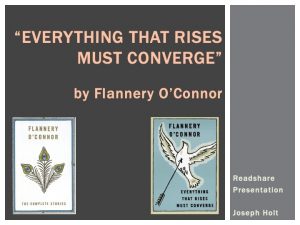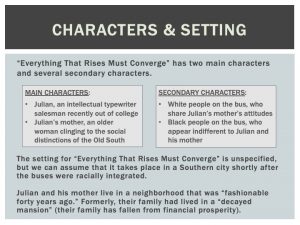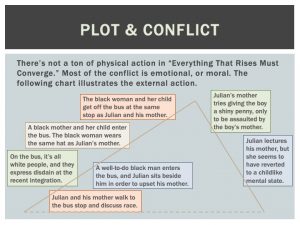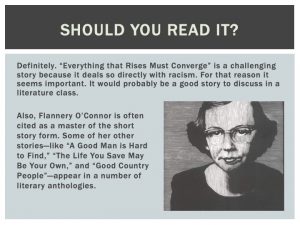Readshare: A Forum for Readers in the Creative Writing Workshop
Joseph Holt
There’s a line in the Charles Portis novel The Dog of the South that pokes fun at the stubborn and self-absorbed nature of writers. Two men are driving through Mexico when their conversation turns to literature. The driver, a pedantic cuckold named Ray Midge, boasts of his military history collection—“sixty-six lineal feet of books,” he says—only for his passenger, the disgraced medical doctor Reo Symes, to dismiss it all outright. There is only one book worth reading, says Dr. Symes, compared to which everything else is “foul grunting.” He produces from his doctor’s grip a slim yellow volume with peeling covers titled With Wings as Eagles.
As it happens, With Wings as Eagles is little more than an instructional tract for salesmen. Its author is the enigmatic John Selmer Dix, M.A., who wrote the book while riding the express bus back and forth between Dallas and Los Angeles, his composition materials spread on a board across his lap. Yet upon Dix’s death, his luggage trunk allegedly went missing. And what did the trunk contain? It’s a great mystery. Not Dix’s clothes, says Dr. Symes, nor his correspondence. Then perhaps his books, says Midge. “No, no, no,” says Dr. Symes. “Dix never read anything but the daily papers. He wrote books, he didn’t have to read them.”
Well, it drives me bonkers when young writers state, almost as a point of pride, that they too don’t read. It’s a claim I’ve encountered more than a few times in my teaching. Maybe students wish to suggest that their overstuffed social lives preclude them from grappling with the labors of others, or maybe they wish to assert ownership over the entirety of their own genius, as though they are beyond influence. (Regardless, one assumes these students are getting all their narrative instruction from TV shows.) It rankles me only slightly less when young writers are asked about their favorite or most influential book, only to cite one they’d been forced to read as a school assignment.
Such students are rare, of course. More common are those who have read widely but secretly, for whom literature has long been a private indulgence. These students might feel sheltered or odd, their rich inner lives difficult to share with nonreaders. It’s in workshop that these students find their communities. You see it play out during full-class discussions, with all the name-dropping of authors and titles, or after dismissal, when bookish debates move into the hallway or the student union or a nearby bar. Workshops are thus empowering in two separate but similar ways: they ask students to generate their own work, and they allow students to declare their literary ambitions—as writers and readers—without fear of judgment.
I’ll state the obvious: writing is inseparable from reading. Add to that, young writers who hope to create valuable stories had better read some valuable stories themselves. “It rarely happens,” writes John Gardner in The Art of Fiction, “that a writer can achieve effects much larger than the effects achieved in books he has read and admired.” We talk sometimes about the tradition of literature—the progression of themes, forms, and techniques over many generations—and that’s the idea I’m working toward here. Writing students should recognize the wealth of published literature that precedes them, not only to ease the pressure of inventing narratives from whole cloth, but also to feel part of a lineage that extends beyond the circled desks of the workshop classroom.
With this in mind, we teachers of creative writing should foster our students’ development as active readers. Here is where the Readshare comes in. In short, the Readshare is an end-of-the-semester presentation, much like that in a public speaking or academic research class. It asks students to locate a short story, describe it in a slideshow, and present on it to their classmates. For our purposes, the Readshare encourages students to take initiative with their reading and to articulate responses to a literary text.
Despite these pedagogical goals, I first conceived of the Readshare assignment as a way to balance a course schedule. A couple of years ago, I was teaching Fiction Writing I at the University of Southern Mississippi, where our undergraduate curriculum was structured so students took introductory, intermediate, and advanced courses in their chosen genre. Because I was leading the introductory course, I wanted students to leave with a grasp on workshop etiquette as well as critical terminology. Yet with an enrollment of twenty students, full-class workshops weren’t really an option. They would be difficult to manage, place an enormous workload on students, and occupy almost all of our instructional time.
My solution was to separate students into workshop groups: two groups for our shorter stories (three to four pages) and three groups for our longer stories (eight to ten pages). While one or two groups met with me for workshops, the other students conducted exercises on their own, outside of class. For their first off-week, students completed three generative exercises of about fifty minutes apiece. For their second off-week, they researched and prepared their Readshare presentations. (I’d liken that time to the research week in an academic writing course, in which students meet in the library but their work is nonetheless self-directed.) Finally, with their Readshare presentations occupying the final week or two of the semester, students had time to process their workshop feedback and prepare their final portfolios.
This exercise was effective because it gave students autonomy and authority. Students were free to present on any short story, with a few specifications. One student chose an H.P. Lovecraft story. Another picked one at random from a copy of Nimrod International Journal of Prose and Poetry she found lying around the department. One student presented on “Everyday Use” by Alice Walker. And one little provocateur chose a short story from Playboy, which at least gave us an opportunity to discuss literary venues. In each case, students took ownership of their reading. Then, in describing their story, they adopted the role of instructor, which of course ends up being the vocation of many creative writers.
Most important, the Readshare presentations created a forum of readers. As the assignment title suggests, students were encouraged to share their enthusiasm for a literary work. Yet as the directions that follow explain, students were asked to remain critical in their assessment of that work. (The slideshow requirement adds rigor, so that students organize their thoughts more deliberately.) The ultimate goal of the Readshare—and perhaps all our efforts in workshop—is to view literature as the result of craft decisions. We can learn to dissect a narrative like one might dissect a frog in biology class, with attention to its composition and the relationship among parts. And with this practice, students should become more comfortable, confident, and adventurous in their own writing.
The structure for a Readshare presentation shouldn’t be tricky. A basic pattern might look like this: (1) summary and context, (2) characters and setting, (3) plot and conflict, (4) theme, point of view, or genre elements, and (5) conclusion and/or recommendation. This structure is flexible, of course. Each story raises its own concerns. And you can imagine how the structure can be adapted for a student critiquing a poem, in which rhythm, diction, imagery, and persona might replace our concern with narrative, or an essay, which might rely more on voice, ethics, tradition, and form.
Step-by-Step Instructions
- Ask students to choose a short story that’s printed in a literary journal or a book (as opposed to online). It should be a moderate-length story of at least ten pages. Any story is fine, so long as it’s meaningful to them as a reader.
- Ask students to create a slideshow in which they summarize their story for their classmates. Remind students that their classmates probably haven’t read their story.
- Presentations should be five to seven minutes and should cover the main fictional concepts of character, setting, plot, conflict, point of view. Rather than literary criticism, presentations should be craft description or analysis. That is, instead of describing “what the story means,” students should assess how it’s constructed. They can also briefly discuss the context—author, publication date, and so on—but that’s not as important as their actual critical reading. Lastly, they can explain why they chose this story and whether they would recommend it to their classmates.
Example of the Exercise
Shortly after distributing the Readshare assignment prompt, I gave this model presentation on Flannery O’Connor’s “Everything That Rises Must Converge.” It wasn’t perfect. For one thing, it ran well over seven minutes. (With that in mind, be sure to have your students practice adhering to the time limit.) My notes on the third slide, “Plot & Conflict,” were far too extensive. That said, developing the slideshow and script deepened my appreciation for “Everything That Rises Must Converge.” We learn well what we need to teach. If you’d like to use this presentation in your own classroom, you can find my email address online and I’ll be happy to share the files with you.
Slide 1. Introduction
Flannery O’Connor was born in Savannah, Georgia, in 1925. O’Connor is well renowned as a writer in the Southern Gothic tradition. The term Southern Gothic usually refers to writing characterized by dark and overgrown locales, outmoded social attitudes, and grotesque characters. The story “Everything That Rises Must Converge” appears in a story collection of the same name, published in 1965, one year after O’Connor died at the age of 39.
In this story, Julian accompanies his mother on the bus to her weekly “reducing class” at the YMCA. Around this time, the buses in their city had recently been desegregated. Julian and his mother have different attitudes about race, and when they encounter several black people on the bus, Julian attempts to antagonize his mother by sitting next to them and being (awkwardly) kind. When Julian and his mother get off at their stop, she tries giving a young black boy a shiny penny, and the boy’s mother assaults her. Julian’s mother is shaken by the confrontation and might be nearly dying at the end of the story.
Slide 2. Characters and Setting
Julian’s mother is “a widow who had struggled fiercely to feed and clothe and put [Julian] through school and who was supporting him now ‘until he got on his own feet.’” But Julian sees his own mother, physically, as “the dumpy figure, surmounted by the atrocious hat.”
Julian is a progressive young man, but he’s self-righteous about racial equality. For instance, “When he got on a bus by himself, he made it a point to sit down beside a Negro, in reparation as it were for his mother’s sins.” Julian is also very spiteful toward his mother. In some instances, he’s downright mean.
Slide 3. Plot and Conflict
Most of the story takes place in scene—dialogue and physical action. But we also have close access to Julian’s thoughts. The entire story happens over a short period—perhaps thirty minutes.
Julian and his mother walk to the bus stop and discuss race. During this scene, we see their vastly different attitudes. Julian’s mother says, “They [meaning black people] should rise, yes, but on their own side of the fence.” She also recalls her childhood when she was raised on the family’s old plantation (in part by a black nurse), and how the house fell into disrepair. From Julian’s mother’s dialogue, we understand her noble but old-fashioned attitudes about race.
Most of the bus passengers are white people who express disdain at the recent integration. Julian’s mother sees the all-white makeup of the bus as an opportunity to raise the issue of race: “Everybody was white. ‘I see we have the bus to ourselves,’ she said. Julian cringed.” She gets a little support from the other white riders, but not really.
When a well-to-do black man enters the bus, Julian sits beside him in order to upset his mother. The narration says, “[Julian’s mother’s] face had turned an angry red. … He felt his tension suddenly lift as if he had openly declared war on her.” Julian starts fantasizing about how he can “teach her a lesson,” like by making black friends. Also during this scene, our sympathy is turned toward Julian’s mother, as she’s described in a childish manner: “Her feet in little pumps dangled like a child’s and did not quite reach the floor.”
A black mother and her child enter the bus. The black woman wears the same hat as Julian’s mother. The woman sits beside Julian and her son sits beside Julian’s mother, leading Julian’s mother to infer that, because of their placement on the bus seats, “she and the woman had, in a sense, switched sons.” Finally, Julian’s mother recognizes that she and the black woman are wearing the same hat, and this, Julian thinks, “should teach you a permanent lesson.” But it doesn’t really teach her a lesson—she’s not humbled, in other words.
The black woman and her child get off at the same bus stop as Julian and his mother. In doing so, Julian’s mother searches her purse for a nickel to give the boy. Julian knows she will do this and tries warning her against it. But because she doesn’t have a nickel, Julian’s mother tries giving the boy a shiny penny, only to be assaulted by the boy’s mother. Her attempt at charity comes off as condescending, and the boy’s mother hits her and says, “He don’t take nobody’s pennies.” The black mother and her son disappear down the street.
Julian lectures his mother, but she seems to have reverted to a childlike mental state. Julian begrudgingly helps his mother as she sits helpless on the sidewalk. “I hope this teaches you a lesson,” he says. She starts walking home, and Julian follows, continuing his lecture even though she’s unresponsive. Finally she says, “Tell Grandpa to come get me. … Tell Caroline [her black nurse from when she was a child] to come get me.” It seems she might be dying, although it’s not totally clear, and Julian runs away to get help.
Slide 4. Special Details and Themes
“Everything That Rises Must Converge” is a morally complicated story. It’s difficult knowing which character to sympathize with. It also uses some outdated terminology (Negro, Negroid, Negress) but I feel we can’t fault the story for that, seeing as how it was written fifty years ago and attempts to deal with questions of segregation and inequality.
The story is concerned with generational decline. Early in the story, Julian’s mother reminds him that “Your great-grandfather was a former governor of this state. … Your grandfather was a prosperous landowner. … Your great-grandfather had a plantation and two-hundred slaves.” Julian doesn’t like being reminded of his family’s old fortunes and their history as racial and economic oppressors.
Slide 5. Should You Read It?
(No script; just read off the screen.)
Biography
Joseph Holt graduated from the Center for Writers at the University of Southern Mississippi. His writing has appeared in Gulf Coast, Prairie Schooner, Colorado Review, and The Sun. He reads prose submissions for A Public Space and teaches in the MFA faculty at the University of Alaska–Fairbanks.

